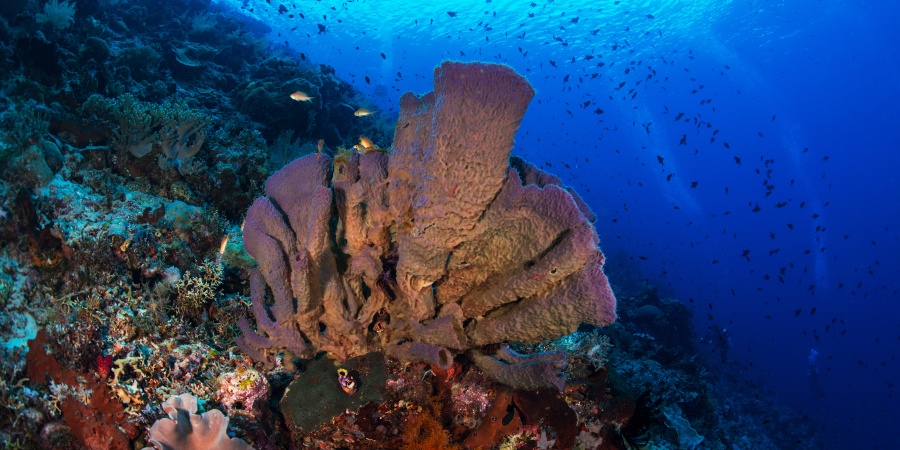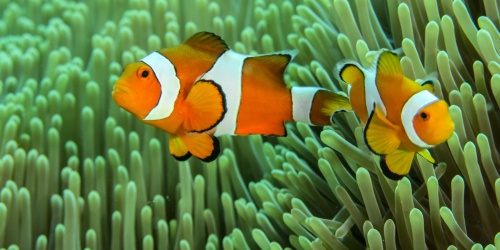
Healthy sea sponge on coral reef - Photo the Ocean Agency / Adobe
What is a sponge? When you see the skeletons of sponges on the beach, it is hard to imagine, firstly, that they are animals and, secondly, their incredible colours and diversity underwater. Greek philosopher Aristotle was the first to recognise, some 2000 years ago, that sponges were animals. In the sixteenth century they were thought to be solidified sea foam.
What do they look like? Living sponges look nothing like the bathroom sponge, which is only the skeleton of one particular group of sponges. The colours include pink, blue, yellow, white, orange and purple. The smallest sponges are only a millimetre high when fully grown and the largest sponge is about as big as a medium-sized barrel. Near the shore, sponges tend to encrust rocks and other structures. In shallow and deep seas, the forms vary from spherical, finger-shaped, bushy or tree-like, tubular, cup-shaped or funnel-shaped. Their texture varies from soft and readily compressible to as hard as stone. The characteristic feature of a sponge is that it bears one or more conspicuous rounded openings. Under a microscope, the rest of the surface is seen to be punctured with minute pores.
Where do they live? Sponges grow virtually anywhere in the ocean where they can gain a firm hold and are found in large numbers from mid-tide level near the shore down to great depths. Colourful sponge gardens are found in all of Western Australia’s marine parks, including some remarkable deep water sponge gardens recently discovered at Ningaloo Marine Park.
What they eat and how: These remarkable animals have virtually no mouths or blood systems. They feed by filtering particles of food, such as tiny plant fragments, from the water.
Breeding: Sponges can reproduce by simply producing a tiny ball, or bud, of sponge that breaks off and forms a new adult that is effectively a small clone of its parent. Sponges can also reproduce by releasing sperm and eggs into the water, where fertilization takes place, leading to the formation of a free-swimming larva. The larva may survive for several days, then settle onto the bottom to grow into an adult.
Conservation status: Sponges are common and there are at least 1000 species living in Western Australian waters, and possibly hundreds that are not yet known to scientists. They could potentially contain compounds that might one day prove to be cures for cancer and other diseases.
How you can protect sponges: As with all of our marine invertebrates that grow attached to underwater surfaces, creating a colourful display, conservation minded divers and snorkellers should simply admire these animals but not touch them.



























